The AI phones are here, but that doesn’t mean they’ve really arrived. The year’s hottest trend is trickling down to mobile tech, but the results so far are a mixed bag, to say the least. Samsung and Google have a lot of AI tricks on their phones that don’t really amount to much yet, and Apple is scrambling to catch up. AI really could be the start of helpful new ways to interact with our phones! But we’re definitely not there yet. In the meantime, be prepared to hear a lot more about AI on your next phone — and temper your expectations.
Technology
Google tool makes AI-generated writing easily detectable


The probability that one word will follow another can be used to create a watermark for AI-generated text
Vikram Arun/Shutterstock
Google has been using artificial intelligence watermarking to automatically identify text generated by the company’s Gemini chatbot, making it easier to distinguish AI-generated content from human-written posts. That watermark system could help prevent misuse of the AI chatbots for misinformation and disinformation – not to mention cheating in school and business settings.
Now, the tech company is making an open-source version of its technique available so that other generative AI developers can similarly watermark the output from their own large language models, says Pushmeet Kohli at Google DeepMind, the company’s AI research team, which combines the former Google Brain and DeepMind labs. “While SynthID isn’t a silver bullet for identifying AI-generated content, it is an important building block for developing more reliable AI identification tools,” he says.
Independent researchers voiced similar optimism. “While no known watermarking method is foolproof, I really think this can help in catching some fraction of AI-generated misinformation, academic cheating and more,” says Scott Aaronson at The University of Texas at Austin, who previously worked on AI safety at OpenAI. “I hope that other large language model companies, including OpenAI and Anthropic, will follow DeepMind’s lead on this.”
In May of this year, Google DeepMind announced that it had implemented its SynthID method for watermarking AI-generated text and video from Google’s Gemini and Veo AI services, respectively. The company has now published a paper in the journal Nature showing how SynthID generally outperformed similar AI watermarking techniques for text. The comparison involved assessing how readily responses from various watermarked AI models could be detected.
In Google DeepMind’s AI watermarking approach, as the model generates a sequence of text, a “tournament sampling” algorithm subtly nudges it toward selecting certain word “tokens”, creating a statistical signature that is detectable by associated software. This process randomly pairs up possible word tokens in a tournament-style bracket, with the winner of each pair being determined by which one scores highest according to a watermarking function. The winners move through successive tournament rounds until just one remains – a “multi-layered approach” that “increases the complexity of any potential attempts to reverse-engineer or remove the watermark”, says Furong Huang at the University of Maryland.
A “determined adversary” with huge amounts of computational power could still remove such AI watermarks, says Hanlin Zhang at Harvard University. But he described SynthID’s approach as making sense given the need for scalable watermarking in AI services.
The Google DeepMind researchers tested two versions of SynthID that represent trade-offs between making the watermark signature more detectable, at the expense of distorting the text typically generated by an AI model. They showed that the non-distortionary version of the AI watermark still worked, without noticeably affecting the quality of 20 million Gemini-generated text responses during a live experiment.
But the researchers also acknowledged that the watermarking works best with longer chatbot responses that can be answered in a variety of ways – such as generating an essay or email – and said it has not yet been tested on responses to maths or coding problems.
Both Google DeepMind’s team and others described the need for additional safeguards against misuse of AI chatbots – with Huang recommending stronger regulation as well. “Mandating watermarking by law would address both the practicality and user adoption challenges, ensuring a more secure use of large language models,” she says.
Topics:
Technology
Early Black Friday smartwatch deals 2024: Apple, Samsung, Garmin
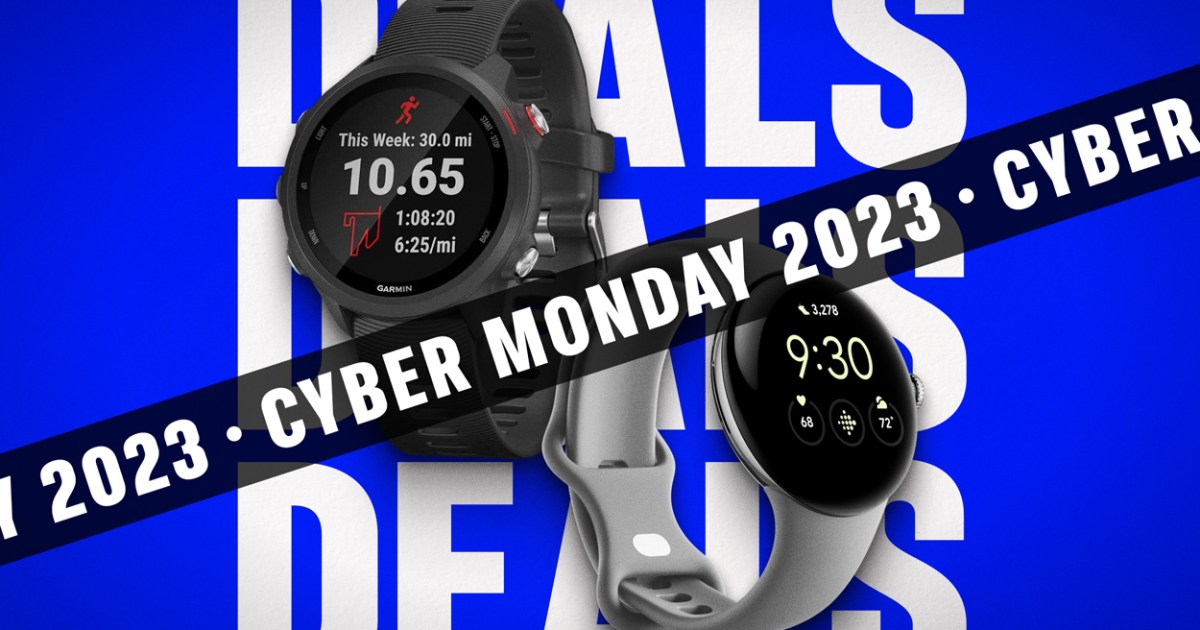
Black Friday and Cyber Monday are some of the best periods to snag yourself a new smartwatch, especially if you’ve been waiting a while before upgrading. While the actual sales day might be a little while off, there are already a lot of great early Black Friday deals that you can take advantage of, including on some of the best smartwatches on the market. To that end, we’ve collected some of our favorite early deals for you below, although it’s also worth keeping an eye on our larger smartwatch deals roundup as well.
Garmin Forerunner 55 — $170 $220 15% off

While most smartwatches focus on the smartwatch part, the Garmin Forerunner 55 is made for runners who want to keep track of their overall fitness and their runs. It comes with GPS tracking in the three major systems, has a whole suite of sensors such as heart rate and Vo2 Max, and comes with a very solid $30 discount off the $200 price tag.
Samsung Galaxy Watch6 Classic — $270 $400 33% off

The Samsung Galaxy Watch6 Classic is easily one of the best Android phones on the market. In fact, when our senior mobile writer Andy Boxall got his hands on it, he felt that “the Galaxy Watch 6 Classic has superb styling, all-day comfort, comprehensive health tracking, and more. It’s the smartwatch to buy for your Android phone.” Even better, this deal lets you snag it for a substantial 33% discount.
Apple Watch Series 9 — $329 $429 23% off
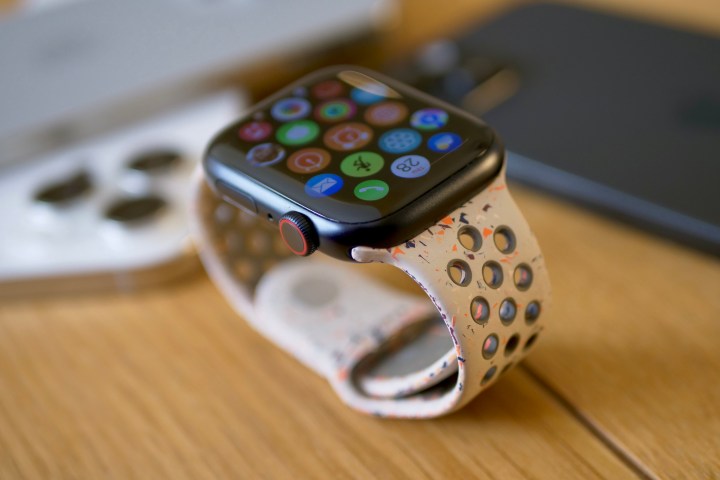
For those who are in the Apple ecosystem, the Apple Watch Series 9 is probably one of the best and most affordable options, even more so with this impressive $100 discount. The conclusion our senior mobile writer came to when reviewing it was “The Apple Watch Series 9’s 24/7 comfort, extensive features, fast performance, and seamless integration with the iPhone make it a must-buy.”
Garmin Venu 3S GPS — $400 $450 11% off
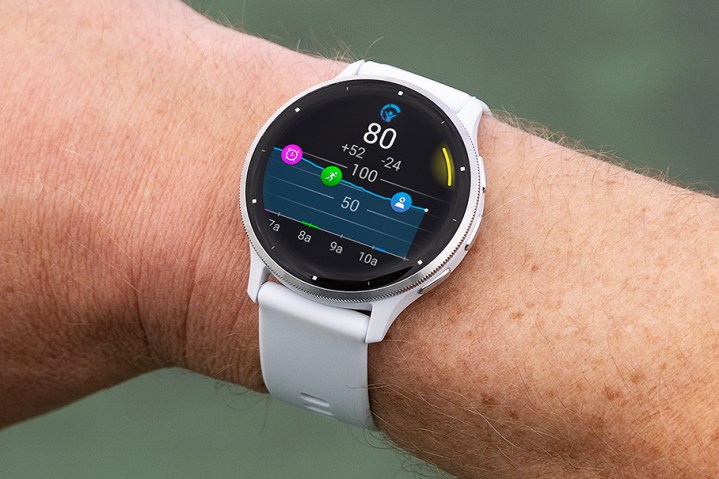
If you’re just as interested in tracking your fitness as having a smartwatch, the Garmin Venu 3S GPS does a great job of balancing both, and since it comes from Garmin, you know that fitness tracking is top notch. Between the GPS coverage, Sleep Coach and Body Battery, you’ll have all the stats you need to refine your fitness journey, plus the $50 discount isn’t too bad either!
Apple Watch Ultra 2 GPS + Cellular — $680 $799 15% off
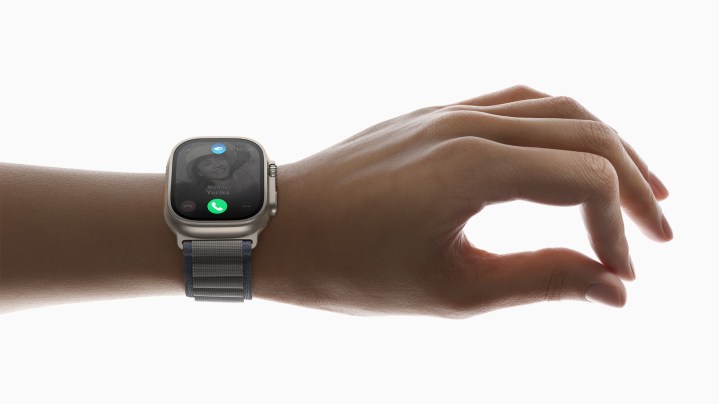
If you’re in the Apple ecosystem and truly want the best experience money can buy, then you’ll want this Apple Watch Ultra 2 GPS deal that knocks $119 off the price tag. Our senior mobile reviewer feels that it has “an outstanding design, great software, and some very welcome upgrades, the Apple Watch Ultra 2 is tough to beat.”
How to Choose a Smartwatch Deal on Black Friday
There are a lot of options out there for smartwatches, but for the most part, there are generally three big players on the market: Apple, Samsung, and Garmin. Apple Watches are made specifically for the Apple ecosystem, and if you’re in it, then you’ll want to go with one of those, with your main options being the Watch Series 9 for a good budget-friendly option, the Ultra Watch 2 for the best, and the Series 10 for something in the middle. We actually have a great breakdown of the Apple Watch Series 9 vs. Ultra 2, so be sure to check that out before taking the plunge.
On the other hand, Samsung is the go-to smartwatch maker for Android, and it generally has two options every generation: a standard model and a pro or classic model with a bezel that you can turn to control the watch. Samsung does have a high-end option in the form of the Galaxy Watch Ultra, but it borrows, almost to a comical extent, from the Apple Watch Ultra.
Finally, Garmin is the brand you go for if you want something more about fitness tracking than a smartwatch. It has a wide range of products, but the Forerunner lineup is great for runners, while the Venu is a great option for those who want a good balance between smartwatch and fitness tracker.
How We Chose These Smartwatch Black Friday Deals
With many decades of combined experience as reviewers and deal hunters, we have a very good sense of what watches offer the best offers and prices. Of course, we don’t just rely on our own instincts, but we also put in a lot of legwork to make sure you’re getting the best deals you can for any single smartwatch we put up here. We also have our own set of tools that we can fall back on to look at things such as historical pricing. When you put all that together, you get suggestions that offer you the best bang for your buck so that you can buy with confidence.
Technology
Motorola Razr 2024 lineup getting Circle to Search by surprise
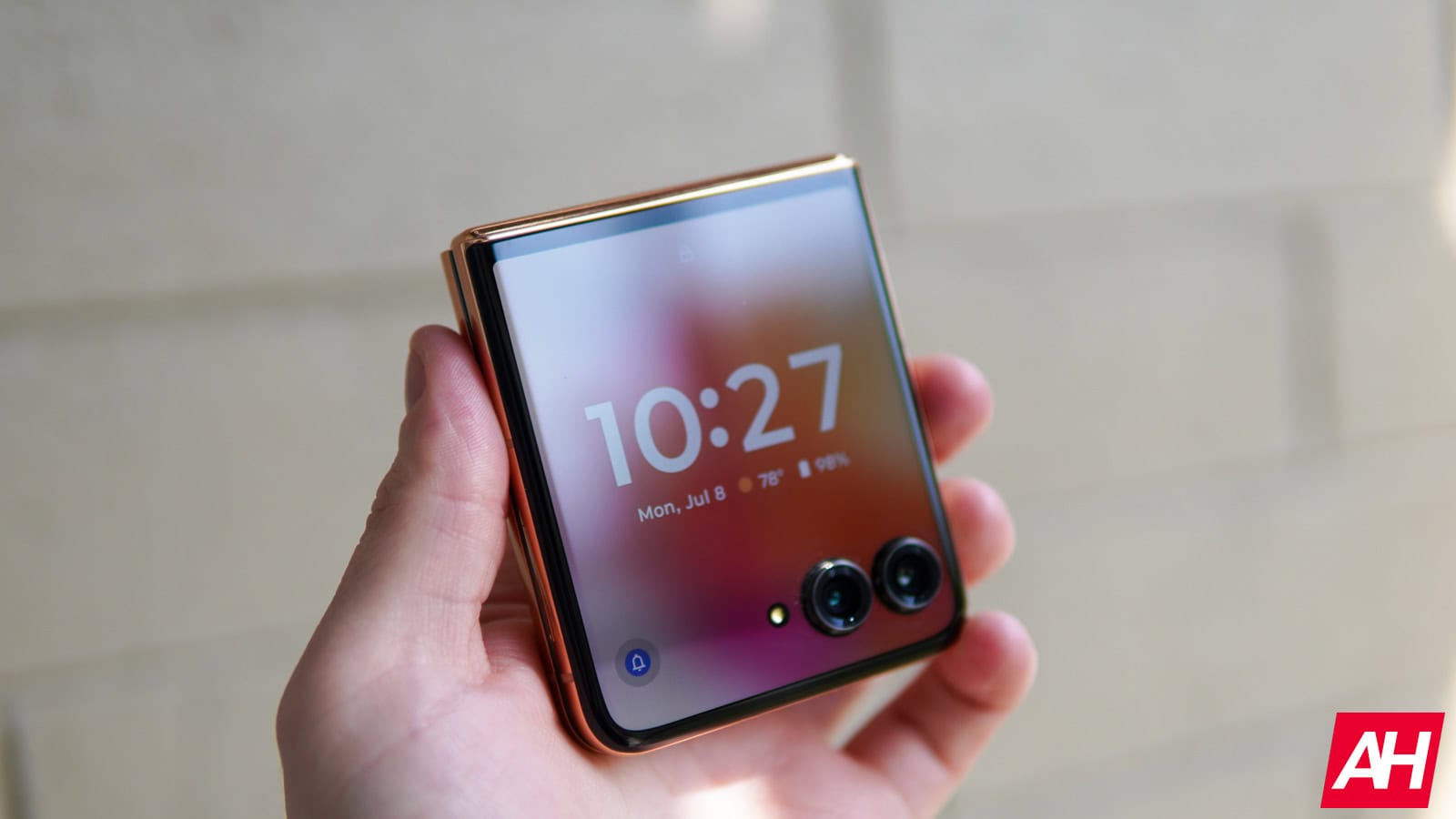
Circle to Search is one of the most potentially useful AI-powered tools Google has developed for mobile devices. Currently, the feature is available on select smartphone models from some manufacturers. However, the expansion of Circle to Search continues, now reaching the Motorola Razr 2024 lineup.
This year, Motorola introduced the Razr Plus 2024 and Razr 2024, a pair of clamshell-designed and competitively priced foldable smartphones, with the aim of reaching the mass market. Perhaps these devices are among the reasons why sales of Galaxy foldable smartphones were below Samsung’s expectations this year. In any case, Motorola’s latest foldable phones are now equipped with Circle to Search, enhancing their functionality.
Motorola’s 2024 Razr foldable phones now support Circle to Search
Interestingly, it seems that Motorola is enabling Circle to Search via a security update for the Razr 2024 series. According to Android Central, the update’s changelog doesn’t mention anything beyond the usual bug fixes and performance optimizations. However, after installing the update, Circle to Search is available on both devices. The firmware is 1.05GB in size on the Razr Plus but just under 1GB on the Razr 2024.
Circle to Search is a quick way to trigger searches related to anything you see on your screen. After invoking it, you just need to circle or draw on an item on the screen. Then, you’ll immediately receive results related to the item. For instance, if you spot a pair of shoes that pique your interest, you can utilize Circle to Search to get the shoe’s model, price, and availability, among other details.
Circle to Search is actually a way to significantly speed up Google Lens searches. For instance, without this feature, a user on a phone would have to take a screenshot, share it with Lens, and then crop the image around the shoes. However, you can access all of Lens’s features from Circle to Search.
The feature is expanding at a slow pace
Initially, the option was only available on select Pixel and Galaxy phones. Later, brands like Xiaomi and Honor announced its availability on some models. Now Motorola is jumping on the bandwagon by rolling out Circle to Search practically by surprise. Although the brand had already announced that it would bring it to its devices, it has not even mentioned it in the changelog of the update that includes it.
Technology
Roblox to launch new child safety protocols next month
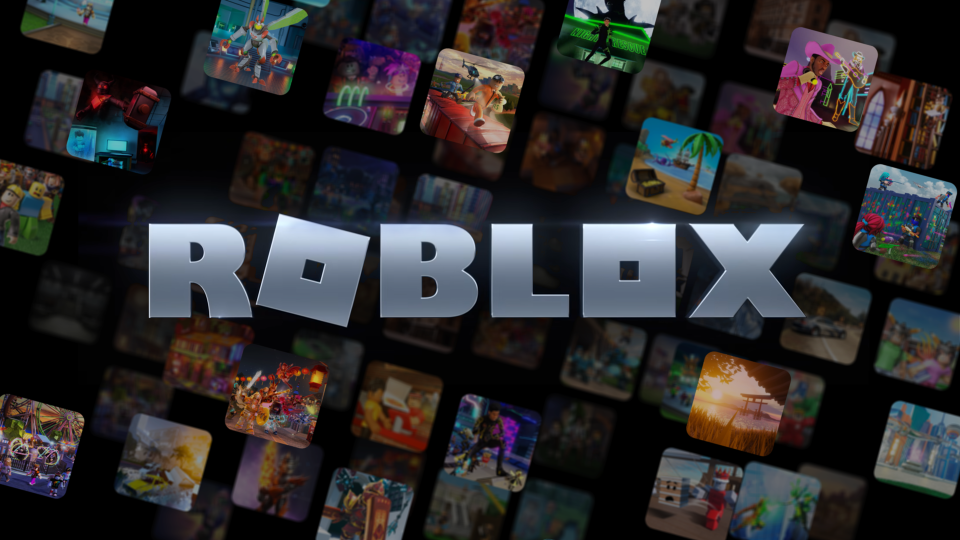
Roblox has adopted several new policies designed to give parents control over how their children use the sprawling online game platform. reported that the company has created a new type of parental account so that a guardian can oversee their kids’ online activities and friends. Roblox is also now requiring parent permission for users under age 13 to access certain features. Users age 9 and younger will also need permission in order to access game modes with moderate violence or crude humor. The publication said these changes are slated to go into effect next month.
Concerns about safety for young players have been a recurring issue for Roblox. The platform faced a claiming exploitation of a minor in 2022. was reluctant to host the game on its hardware over questions of whether Roblox exposed children to inappropriate sexual content, and the same justification led to a earlier this year. Hindenburg Research recently released an about predatory behavior as well as misleading financial activity at Roblox (although that source has a shaky reputation of its own). An investigation by Bloomberg Businessweek found that at least two dozen people have been arrested by US law enforcement since 2018 for abusing or abducting child victims they met on Roblox.
Technology
Beleaguered startup Humane drops Ai Pin price by $200
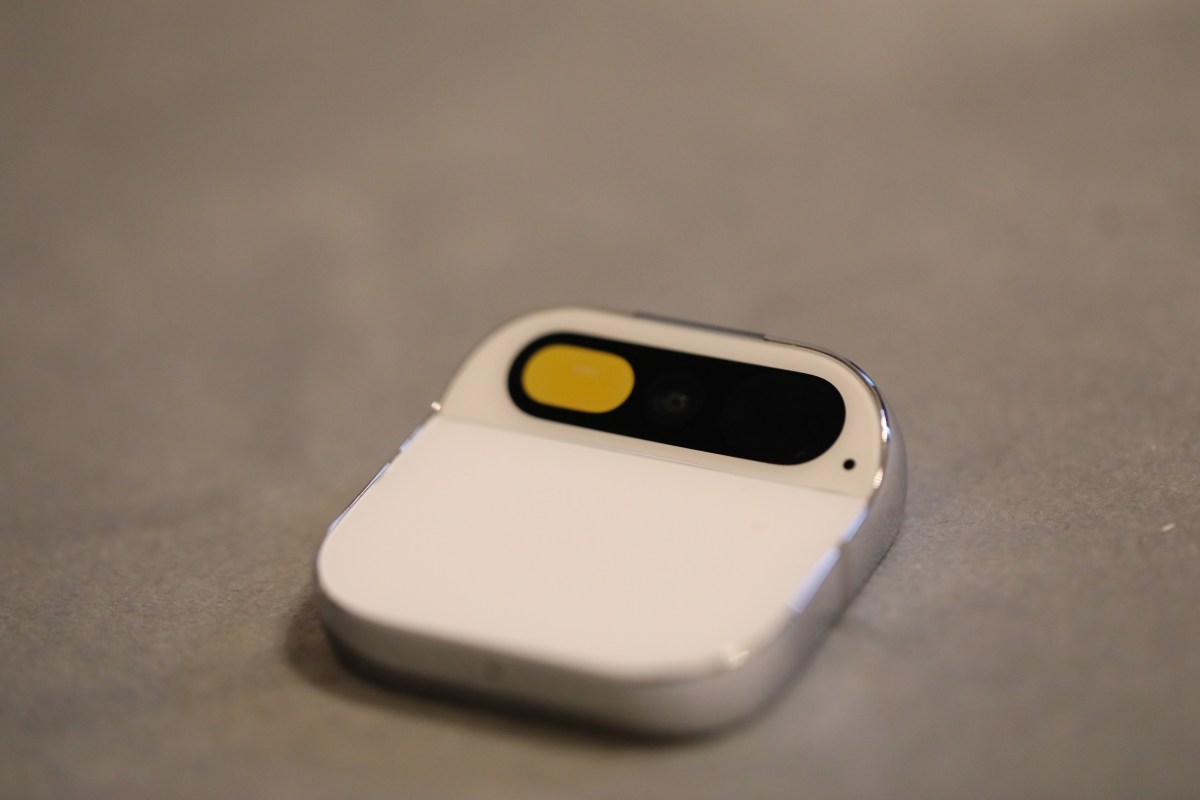
Humane on Wednesday announced a $200 price cut to its flagship product, the Ai Pin. The Bay Area startup, founded by two former Apple executives, has reportedly struggled to sell the product, which launched in April for $700.
In a message sent to its email list, Humane highlights its return policy in the new pitch. “Ai Pin starts at $499 and includes your first month of Humane Plan on us,” the company writes. “Along with a 90-day return window, it’s completely risk-free to try.”
The device was poorly received by reviewers. By August, returns of the Ai Pin had reportedly begun to outpace sales, leaving some 7,000 to 8,000 devices in the hands of users.
The company reportedly began exploring a sale in May, amid poor reviews and poorer sales.
Technology
Best phone 2024: the top smartphones to buy right now
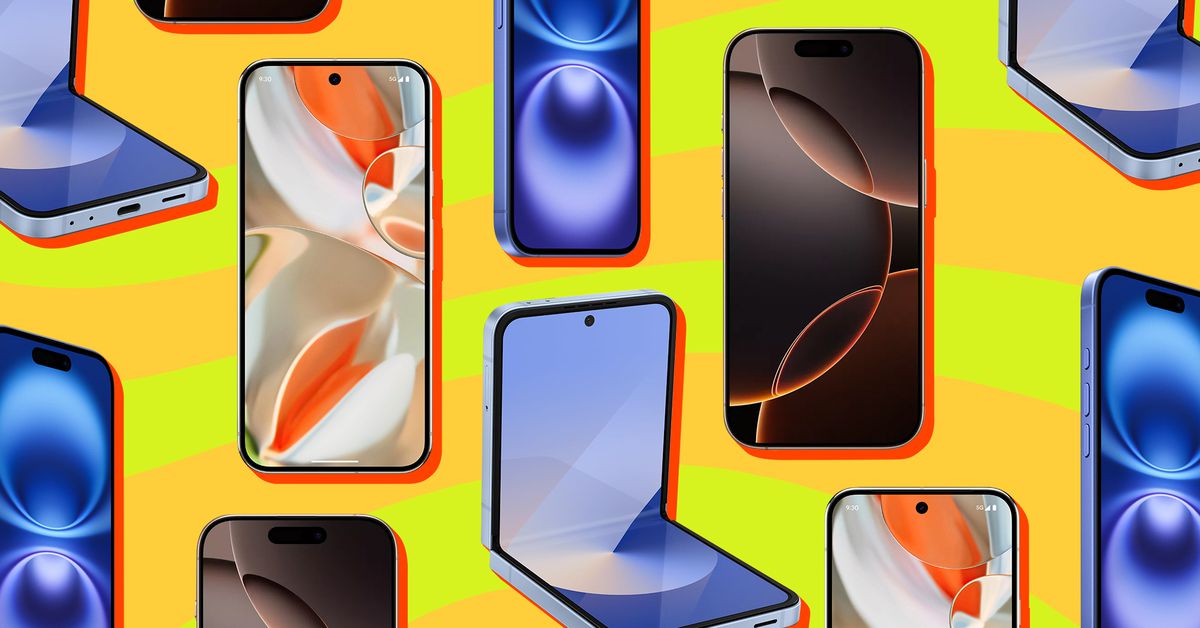
A lot of people in the US get their phones through carrier deals, and no judgment here if that’s the route you take — it’s how I bought mine. Just be sure you know what you’re getting into and how many years you’ll need to stay on that Super 5G Everything Unlimited Plus plan to keep the monthly device reimbursements coming.
If you’re looking to spend a little less and still get the best smartphone on a budget, you can find something really good for under $500. For those recommendations, check out our guide to budget smartphones.
The best iPhone for most people
Screen: 6.1-inch, 2556 x 1179 OLED, 60Hz refresh rate / Processor: A18 Cameras: 48-megapixel f/1.6 main with sensor-shift IS; 12-megapixel ultrawide; 12-megapixel selfie / Battery: Not advertised / Charging: 27W wired, 25W wireless MagSafe, 15W Qi2, 7.5W Qi / Weather-resistance rating: IP68
From a hardware perspective, the iPhone 16 (or the 16 Plus) is an easy upgrade choice. If you’re switching from an iPhone 13, 12, or even older, those four or five years of incremental performance improvements add up. But there’s something entirely new this time around — well, two things: the Action Button and the Camera Control button.
The customizable Action Button, which replaces the mute switch on the left edge of the phone, is a hand-me-down from the 15 Pro series. You can set it to open a particular app, turn on the flashlight, or almost anything else you might want at the touch of a button. On the other side of the phone is the Camera Control, which you can use to launch the camera app. With the camera open, it acts as a shutter button with a full press, and a light press brings up other exposure options you can adjust. Even if you only ever use it to launch the camera, it’s pretty handy, and it frees up the Action Button.
The iPhone 16 and its larger 16 Plus sibling use Apple’s A18 chipset, which is in the same family as the 16 Pro’s processor. That bodes well for the phones staying on the same software upgrade cycle. They’re both slated to get an update with Apple Intelligence in the fall, which will include AI-powered writing tools and notification summaries in its earliest iteration. But despite the similarities, the regular 16 models lag behind the Pros in two important departments: the screen and the camera.
The Pros come with dedicated 5x lenses and updated main cameras that do a little better in low light. And you’ll only get a ProMotion display on the Pro models; the regular 16 features a slower 60Hz screen. Basically every other high-end phone on the market offers a 120Hz display, so that’s a disappointment. If those two drawbacks don’t bother you — and most people probably won’t mind them — then the iPhone 16 makes for a great upgrade.
The best Android phone for most people
Screen: 6.3-inch, 1080p 120Hz OLED / Processor: Tensor G4 / Cameras: 50-megapixel f/1.7 main with OIS; 48-megapixel ultrawide; 10.5-megapixel selfie / Battery: 4,700mAh / Charging: 27W wired, 15W wireless (with Pixel Stand 2) / Weather resistance: IP68
The Android ecosystem has been looking for a phone like the Pixel 9 for a while now. It’s straightforward and unfussy, takes reliably good photos, and comes with the polished hardware you’d expect from a high-end phone. It doesn’t have a dedicated telephoto lens, which the similarly priced Galaxy S24 does, but the software is less quirky than Samsung’s, making for a better overall experience.
Outside of zoom capabilities, Google’s Pixel camera is just as reliable as ever. The phone comes with a Tensor G4 chipset that powers AI features aplenty, both inside and outside of the camera app. Some are promising and some are worrying, but there’s nothing here that feels like a true game-changer. Which is fine.
The important thing is that the Pixel 9 has the right stuff where it counts. It’s easy to use, and some of the Pixel series’ persistent problems like poor thermals and buggy software seem to be under control in this generation. The 9 Pro is a worthwhile upgrade if you want that telephoto lens and a slightly nicer screen, but in any case, the Pixel 9 feels like a top-notch device, inside and out.
The best high-end Android phone
Screen: 6.8-inch, 1440p, 120Hz OLED / Processor: Qualcomm Snapdragon 8 Gen 3 / Cameras: 200-megapixel main with OIS; 50-megapixel 5x telephoto with OIS; 10-megapixel 3x telephoto with OIS; 12-megapixel ultrawide; 12-megapixel selfie / Battery: 5,000mAh / Charging: 45W wired, 15W wireless / Weather resistance: IP68
Samsung’s maximalist S-series Ultra phone sort of exists in its own stratosphere. Where else are you going to find a phone with four rear cameras and a built-in stylus? The S24 Ultra remains an everything-but-the-kitchen-sink phone, and even though it’s every bit as feature-packed as last year’s model, it feels just a little less special than the S23 Ultra did.
The aforementioned Galaxy AI features are here, of course, but they’re nothing to write home about just yet, and they’re available on the S23 series, too. The S24 Ultra’s starting price went up, too — now $1,299 rather than $1,199. And the optical 10x zoom lens is gone, replaced by a 5x zoom with more megapixels and in-sensor cropping to get to 10x. It’s mostly fine, but man, there was something cool about a true 10x zoom on a phone.
All that said, the S24 Ultra can’t be beat if you’re looking for the very best Android phone — cost and size be damned. The 6.8-inch display now comes with anti-glare treatment that does a fantastic job of cutting reflections and keeping the screen comfortable to use outdoors. The phone handles heavy processing tasks without a problem, and the camera system is usually good and occasionally brilliant, especially with 3x portrait mode photos. And there’s an S Pen! Have you ever seen a fancier way to make a to-do list?
Ultra devotees likely won’t have a problem stomaching the price hike this year thanks in no small part to Samsung’s generous trade-in deals. For everyone else, it’s best to think of the S24 Ultra like any other pricey gadget — a beautiful, splurge-worthy device if nothing but the absolute best will make you happy.
The best phone for around $500
$499
Google’s latest midranger touts a whopping seven years of software support and a number of small upgrades, including Google’s speedy Tensor G3 processor, a 120Hz display, and plenty of new AI features. Read our review.
Screen: 6.1-inch, 1080p OLED, 120Hz / Processor: Tensor G3 Cameras: 64-megapixel f/1.89 with OIS; 13-megapixel ultrawide; 13-megapixel selfie / Battery: 4,492mAh / Charging: 18W wired, 7.5W wireless / Weather-resistance rating: IP67
It’s hard to beat the Pixel 8A on sheer ROI. For $500, you get a very good budget phone that comes with seven years of OS and security updates; most phones at this price will only see a handful of OS upgrades, if that. The 8A also comes with a good camera that covers the basics. It’s not as fancy as the Pixel 9 or 9 Pro, but it won’t prevent you from capturing that once-in-a-lifetime shot.
The Pixel 8A provides a lot of other things you wouldn’t necessarily expect from a $500 phone, like wireless charging and an IP67 rating for resistance against full water immersion. Of course, you can’t have everything. The 8A’s back panel is matte plastic rather than glass, sadly, and its 6.1-inch 1080p screen isn’t the best in its class (see the OnePlus 12R).
There are other phones available for under $500 worth considering, many of which are covered in our guide to the best inexpensive phones. But if you’re looking for the absolute most value you can get from a $500 phone, then look no further than the 8A.
The best high-end iPhone
$999
The iPhone 16 Pro sports a new 6.3-inch OLED panel with 120Hz refresh, all of which is powered by a new A18 Pro chip. Its triple camera array features a higher-res 48MP sensor for its ultrawide lens, and there’s a new physical Camera Control button for taking pictures and operating the camera app.
Screen: 6.3-inch, 2622 x 1206 OLED, 120Hz refresh rate / Processor: A18 Pro Cameras: 48-megapixel f/1.8 with sensor-shift IS; 12-megapixel 5x telephoto with OIS; 48-megapixel ultrawide; 12-megapixel selfie / Battery: Not advertised / Charging: 27W wired, 25W MagSafe wireless, 15W Qi2, 7.5W Qi / Weather-resistance rating: IP68
Like all four iPhone 16 models, the 16 Pro gained the new Camera Control, but it got another important update, too: a 5x telephoto lens. In the 15 series, that longer telephoto lens was reserved for the bigger Pro Max model. This time around, it’s on the smaller Pro, too, making it a great option for someone who wants to upgrade without upsizing their phone.
Like the Pro Max, the iPhone 16 Pro uses an A18 Pro chipset designed to support Apple Intelligence, which will start rolling out in the fall of 2024. The first update will include things like notification summaries and the new glowing-border Siri UI, which Apple centered its launch event on. But don’t expect anything radical — at least at first.
Outside of AI, the 16 Pro is a fairly iterative update. The new Camera Control makes it easier to launch the camera and get right to taking photos, and it also frees up the Action Button if you were using it as a camera shortcut. The screen is a little bigger at 6.3 inches compared to 6.1 inches, even though the phone is basically the same size. You can record 4K video at 120fps now. And the new Photographic Styles, which are available on all iPhone 16 models, let you take more control over your photos than ever.
There’s nothing here that someone with an iPhone 15 Pro should upgrade for, but it’s an all-around solid device that will please Apple devotees, especially those who prefer a phone that isn’t too big.
The best flip phone
Screen: 6.7-inch, 1080p, 120Hz OLED inner screen; 3.4-inch, 720p, OLED cover screen / Processor: Qualcomm Snapdragon 8 Gen 3 / Cameras: 50-megapixel f/1.8 main with OIS; 12-megapixel ultrawide; 10-megapixel selfie (inner screen) / Battery: 4,000mAh / Charging: 25W wired, 15W wireless / Weather resistance: IP48
The Samsung Galaxy Z Flip 6 isn’t the most fun flip phone you can buy right now; that would be the 2024 Motorola Razr Plus. But fun only goes so far, and the Z Flip 6 is the more reliable device of the two. When it comes to the device you use day in and day out, reliability counts for a lot.
Motorola’s take on the modern flip phone embraces nostalgia with cute animations and a mode that sends the whole device back to the early 2000s. The Z Flip 6 lacks this kind of charm, but you do get an updated cover screen UI that’s more customizable than the Z Flip 5’s. The Flip 6 also comes with seven years of software updates, which matches the best software policies on the market. The hardware will probably give out long before the software, honestly.
That’s the other side of the flip phone coin: long-term durability is iffy. Sure, the Flip 6 is built to withstand full water immersion, but it still doesn’t have any formal dust resistance. For that reason, it isn’t a phone I would recommend to just anyone.
That said, the Z Flip 6’s outer screen does come in handy. You can do a lot with the prebaked widget options available to use, and if you’re just a little adventurous, you can run any app you want on the little screen. Starting a Strava workout or sending a quick text is a cinch, which is a big part of the appeal of a flip phone. Just, you know, keep this phone away from the beach.
The best folding phone
Screen: 8.0-inch, 2076p, 120Hz OLED inner screen; 6.3-inch, 1080p, 120Hz OLED cover screen / Processor: Tensor G4 / Cameras: 48-megapixel f/1.7 main with OIS; 10.8-megapixel 5x telephoto with OIS; 10.5-megapixel ultrawide; 10-megapixel selfie (cover screen); 10-megapixel inner selfie camera / Battery: 4,650mAh / Charging: 21W wired, 7.5W wireless / Weather resistance: IPX8
It’s hard to convey just how nice the Pixel 9 Pro Fold is to use. It’s the first book-style folding phone that fully delivers on the promise of a foldable: it’s a tablet when you need it and a regular phone when you don’t.
Samsung’s Z Fold series feels a little too narrow and cramped in its closed configuration, and the original Pixel Fold was too bulky and heavy to use comfortably. The 9 Pro Fold is lighter, and using its 6.3-inch outer screen feels basically like using a normal phone, which is a big win.
That’s really the theme of the Pixel 9 Pro Fold: it just feels normal. But there are a couple of decidedly not-normal things to consider: price and durability. The 9 Pro Fold costs $1,799 — basically the going rate for a book-style foldable but still a lot of money for a phone.
And long-term durability is unclear, especially given that this is only Google’s second folding phone. It’s rated to withstand full water immersion, but as with any foldable, dust is a concern, so you’ll want to take a little extra care with this device. All that said, someone with the stomach (and wallet) for the 9 Pro Fold will find it a very rewarding device.
The best phone for something completely different
Screen: 6.7-inch, 1080p, 120Hz OLED / Processor: Qualcomm Snapdragon 8 Plus Gen 1 / Cameras: 50-megapixel F/1.9 main with OIS; 50-megapixel ultrawide; 32-megapixel selfie / Battery: 4,700mAh / Charging: 45W wired, 15W wireless / Weather resistance: IP54
The Nothing Phone 2 isn’t for everyone, but for the right kind of person, it’s a very good alternative to the Galaxies and Pixels of the world. It’s a style-driven device, from the dot-matrix-inspired UI to the flashing light strips on the back panel. Will its unique hardware and software features help you take back your attention span as Nothing claims? Eh, probably not. Mostly, it’s just a cool-looking gadget and a thoughtfully designed device.
The Phone 2 is equipped with a Snapdragon 8 Plus Gen 1 chipset, which is a slightly older but still very capable processor. Its 6.7-inch, 1080p screen supports a fast 120Hz top refresh rate, and its lowest 1Hz refresh rate allows it to offer an information-rich always-on display. The camera system is good, though not quite as consistent as the Pixel 7’s. There’s wireless charging, fast 45W wired charging, and an all-day battery.
That’s all of the good news. The bad news is that it’s only rated IP54, meaning it’s not fully dustproof, and it’s only resistant to splashes rather than full immersion in water. Most other phones at this price offer a full IP68 rating, and a couple of cheaper midrange phones, like the Pixel 8A, still include IP67 water resistance. The Phone 2 also lacks official support for Verizon’s network, which rules it out for a lot of people in the US.
There’s the Glyph Interface, too — those lights on the back of the phone. It’s a neat idea with some interesting applications if you invest a little time in tweaking it. You can flip it over to silence notifications when you need some time to focus and handpick certain “essential” alerts to light up the Glyph. Personally, I find it less helpful than a traditional focus mode or even the Phone 2’s always-on display. But others might find it useful, and if nothing else, it looks neat.
The Phone 2 isn’t the best choice for sheer value — the Pixel 8A is a much better deal. It’s not the best choice for someone who just wants a phone to get them through their day with minimal hassle. But it’s undeniably different, and if you’re looking for something outside of the ordinary with a certain visual appeal, then it’s a worthy candidate.
Other good phones
- The Samsung Galaxy S24 is a little fussier to use than our overall pick for the best Android phone, but it’s still a solid performer and includes a telephoto lens, which very few of the “basic” flagships do. At this point, it’s also the smallest high-end phone you can buy in the US, if that’s your thing. (It’s my thing.)
- The 2024 Motorola Razr Plus is a delightful flip phone with tons of nostalgic vibes, with a big cover screen that’s handy for accessing quick tasks without opening the phone. But Motorola’s track record for timely software updates isn’t great, making it hard to fully recommend the Razr Plus.
Update, October 23rd: Adjusted pricing.
Technology
Meet the 634g Japanese wonder notebook that runs on Intel’s latest CPU — it makes the Dell XPS 13 looks overweight, but shame about the battery life
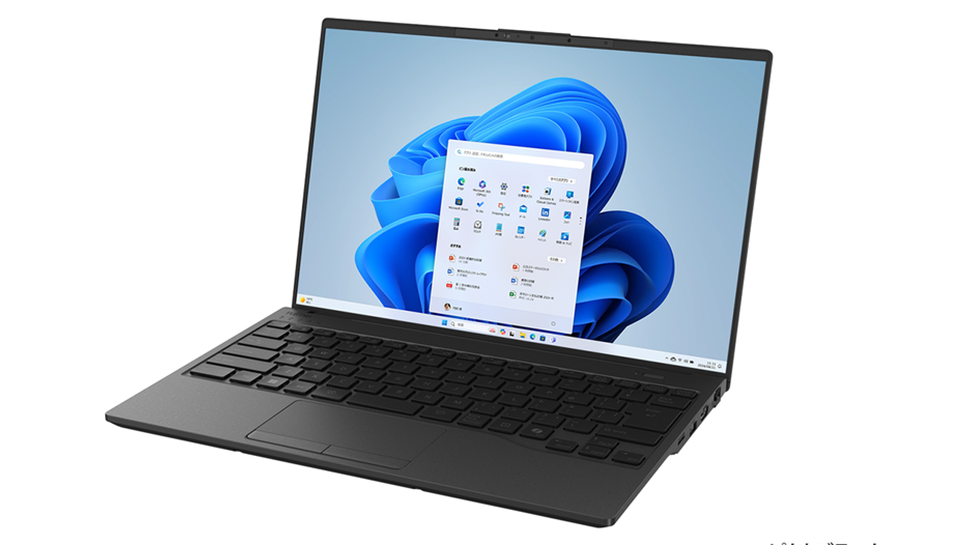

Fujitsu has launched the FMV Zero notebook, which at only 634g (1.4 lbs), looks to claim the title of the world’s lightest 14-inch laptop.
This ultra-light device is part of FCCL’s FMV LIFEBOOK UH series and features Intel’s latest Core Ultra processors with integrated AI Boost NPUs for hardware acceleration of AI services such as Copilot on Windows 11.
The WU5/J3 is powered by Intel Core Ultra 5 125U or Core Ultra 7 155U processors and weighs between 634g and 639g, depending on the configuration. For comparison, the non-touch screen version of the Dell XPS 13 weighs 1.22 kg (2.69 lbs), approximately 92.43% heavier than the FMV Zero.
Short battery life
The FMV Zero is currently only available to buy in Japan through Fujitsu’s shopping site Web Mart, and comes in two models: WU5/J3 and WU4/J3. The WU5/J3 will be available in mid-November 2024 for 197,900 yen (approximately $1,320 USD), and the WU4/J3 will be released in late October 2024 for 193,300 yen (around $1,290 USD). Both models offer a range of configurations, with memory options ranging from 8GB to 64GB and SSD storage capacities from 256GB to 2TB.
Fujitsu says it achieved this lightweight design by optimizing the LCD panel, battery, and palm rest materials, as well as redesigning the internal components to reduce their weight by a few grams here and there. While the end result is a super-light laptop, the quest to trim as much weight as possible has massively impacted battery life. If you’re watching video or performing intensive tasks, you’ll run out juice in under six hours, although it can manage up to 15 hours in idle mode.
The WU4/J3, slightly heavier at 888g, offers a longer battery life of up to 11.5 hours of video playback or 30 hours of idle time. It is powered by Intel Core Ultra 5 125H or Core Ultra 7 155H processors.
The FMV Zero is equipped with AI-powered tools like noise cancellation, Umore makeup, and Quick Capture, with enhanced speaker recognition features.
More from TechRadar Pro
-

 Science & Environment1 month ago
Science & Environment1 month agoHyperelastic gel is one of the stretchiest materials known to science
-

 Technology4 weeks ago
Technology4 weeks agoIs sharing your smartphone PIN part of a healthy relationship?
-

 Science & Environment1 month ago
Science & Environment1 month ago‘Running of the bulls’ festival crowds move like charged particles
-

 Science & Environment1 month ago
Science & Environment1 month agoMaxwell’s demon charges quantum batteries inside of a quantum computer
-

 Science & Environment1 month ago
Science & Environment1 month agoHow to unsnarl a tangle of threads, according to physics
-

 Science & Environment4 weeks ago
Science & Environment4 weeks agoX-rays reveal half-billion-year-old insect ancestor
-

 Technology1 month ago
Technology1 month agoWould-be reality TV contestants ‘not looking real’
-

 Science & Environment1 month ago
Science & Environment1 month agoSunlight-trapping device can generate temperatures over 1000°C
-

 Science & Environment1 month ago
Science & Environment1 month agoLiquid crystals could improve quantum communication devices
-

 Science & Environment1 month ago
Science & Environment1 month agoQuantum ‘supersolid’ matter stirred using magnets
-

 Technology3 weeks ago
Technology3 weeks agoUkraine is using AI to manage the removal of Russian landmines
-

 Womens Workouts1 month ago
Womens Workouts1 month ago3 Day Full Body Women’s Dumbbell Only Workout
-

 TV3 weeks ago
TV3 weeks agoসারাদেশে দিনব্যাপী বৃষ্টির পূর্বাভাস; সমুদ্রবন্দরে ৩ নম্বর সংকেত | Weather Today | Jamuna TV
-

 Science & Environment1 month ago
Science & Environment1 month agoLaser helps turn an electron into a coil of mass and charge
-

 Science & Environment1 month ago
Science & Environment1 month agoWhy this is a golden age for life to thrive across the universe
-

 Science & Environment1 month ago
Science & Environment1 month agoA new kind of experiment at the Large Hadron Collider could unravel quantum reality
-

 News3 weeks ago
News3 weeks agoMassive blasts in Beirut after renewed Israeli air strikes
-

 Football3 weeks ago
Football3 weeks agoRangers & Celtic ready for first SWPL derby showdown
-

 News3 weeks ago
News3 weeks ago▶ Hamas Spent $1B on Tunnels Instead of Investing in a Future for Gaza’s People
-

 News3 weeks ago
News3 weeks agoNavigating the News Void: Opportunities for Revitalization
-

 Science & Environment1 month ago
Science & Environment1 month agoQuantum forces used to automatically assemble tiny device
-

 Science & Environment1 month ago
Science & Environment1 month agoA slight curve helps rocks make the biggest splash
-

 Science & Environment1 month ago
Science & Environment1 month agoNerve fibres in the brain could generate quantum entanglement
-

 Technology3 weeks ago
Technology3 weeks agoSamsung Passkeys will work with Samsung’s smart home devices
-

 Business3 weeks ago
Business3 weeks agoWhen to tip and when not to tip
-

 Technology3 weeks ago
Technology3 weeks agoMicrophone made of atom-thick graphene could be used in smartphones
-

 MMA2 weeks ago
MMA2 weeks ago‘Uncrowned queen’ Kayla Harrison tastes blood, wants UFC title run
-

 Science & Environment1 month ago
Science & Environment1 month agoHow to wrap your mind around the real multiverse
-

 Science & Environment1 month ago
Science & Environment1 month agoITER: Is the world’s biggest fusion experiment dead after new delay to 2035?
-

 Science & Environment1 month ago
Science & Environment1 month agoNuclear fusion experiment overcomes two key operating hurdles
-

 News1 month ago
News1 month ago▶️ Hamas in the West Bank: Rising Support and Deadly Attacks You Might Not Know About
-

 MMA3 weeks ago
MMA3 weeks agoJulianna Peña trashes Raquel Pennington’s behavior as champ
-
Business3 weeks ago
DoJ accuses Donald Trump of ‘private criminal effort’ to overturn 2020 election
-

 MMA3 weeks ago
MMA3 weeks agoPereira vs. Rountree prediction: Champ chases legend status
-

 Sport3 weeks ago
Sport3 weeks agoWales fall to second loss of WXV against Italy
-

 Sport3 weeks ago
Sport3 weeks agoMan City ask for Premier League season to be DELAYED as Pep Guardiola escalates fixture pile-up row
-

 Science & Environment1 month ago
Science & Environment1 month agoPhysicists have worked out how to melt any material
-

 News1 month ago
News1 month ago▶️ Media Bias: How They Spin Attack on Hezbollah and Ignore the Reality
-

 Technology1 month ago
Technology1 month agoMeta has a major opportunity to win the AI hardware race
-

 Science & Environment1 month ago
Science & Environment1 month agoTime travel sci-fi novel is a rip-roaringly good thought experiment
-

 Technology4 weeks ago
Technology4 weeks agoWhy Machines Learn: A clever primer makes sense of what makes AI possible
-

 Technology3 weeks ago
Technology3 weeks agoThis AI video generator can melt, crush, blow up, or turn anything into cake
-

 MMA3 weeks ago
MMA3 weeks agoDana White’s Contender Series 74 recap, analysis, winner grades
-

 Technology3 weeks ago
Technology3 weeks agoMusk faces SEC questions over X takeover
-

 News3 weeks ago
News3 weeks agoFamily plans to honor hurricane victim using logs from fallen tree that killed him
-

 Sport3 weeks ago
Sport3 weeks agoBoxing: World champion Nick Ball set for Liverpool homecoming against Ronny Rios
-
News1 month ago
the pick of new debut fiction
-

 News1 month ago
News1 month agoOur millionaire neighbour blocks us from using public footpath & screams at us in street.. it’s like living in a WARZONE – WordupNews
-

 News3 weeks ago
News3 weeks ago‘Blacks for Trump’ and Pennsylvania progressives play for undecided voters
-

 Technology3 weeks ago
Technology3 weeks agoThe best budget robot vacuums for 2024
-

 Sport3 weeks ago
Sport3 weeks agoWorld’s sexiest referee Claudia Romani shows off incredible figure in animal print bikini on South Beach
-

 MMA3 weeks ago
MMA3 weeks agoPereira vs. Rountree preview show live stream
-
Business3 weeks ago
Sterling slides after Bailey says BoE could be ‘a bit more aggressive’ on rates
-

 Technology3 weeks ago
Technology3 weeks agoMicrosoft just dropped Drasi, and it could change how we handle big data
-

 Sport3 weeks ago
Sport3 weeks agoChina Open: Carlos Alcaraz recovers to beat Jannik Sinner in dramatic final
-

 News3 weeks ago
News3 weeks agoGerman Car Company Declares Bankruptcy – 200 Employees Lose Their Jobs
-

 Sport3 weeks ago
Sport3 weeks agoSturm Graz: How Austrians ended Red Bull’s title dominance
-

 MMA3 weeks ago
MMA3 weeks agoUFC 307 preview show: Will Alex Pereira’s wild ride continue, or does Khalil Rountree shock the world?
-

 TV3 weeks ago
TV3 weeks agoLove Island star sparks feud rumours as one Islander is missing from glam girls’ night
-

 Sport3 weeks ago
Sport3 weeks agoCoco Gauff stages superb comeback to reach China Open final
-

 Entertainment3 weeks ago
Entertainment3 weeks agoNew documentary explores actor Christopher Reeve’s life and legacy
-
Business3 weeks ago
Bank of England warns of ‘future stress’ from hedge fund bets against US Treasuries
-

 Business3 weeks ago
Business3 weeks agoChancellor Rachel Reeves says she needs to raise £20bn. How might she do it?
-

 Technology3 weeks ago
Technology3 weeks agoTexas is suing TikTok for allegedly violating its new child privacy law
-

 Money3 weeks ago
Money3 weeks agoWetherspoons issues update on closures – see the full list of five still at risk and 26 gone for good
-

 Technology3 weeks ago
Technology3 weeks agoThe best shows on Max (formerly HBO Max) right now
-

 News3 weeks ago
News3 weeks agoHeavy strikes shake Beirut as Israel expands Lebanon campaign
-

 MMA3 weeks ago
MMA3 weeks agoAlex Pereira faces ‘trap game’ vs. Khalil Rountree
-

 Technology3 weeks ago
Technology3 weeks agoJ.B. Hunt and UP.Labs launch venture lab to build logistics startups
-

 TV3 weeks ago
TV3 weeks agoPhillip Schofield accidentally sets his camp on FIRE after using emergency radio to Channel 5 crew
-

 Technology3 weeks ago
Technology3 weeks agoGmail gets redesigned summary cards with more data & features
-

 News3 weeks ago
News3 weeks agoWoman who died of cancer ‘was misdiagnosed on phone call with GP’
-

 News3 weeks ago
News3 weeks agoHeartbreaking end to search as body of influencer, 27, found after yacht party shipwreck on ‘Devil’s Throat’ coastline
-
Business3 weeks ago
Head of UK Competition Appeal Tribunal to step down after rebuke for serious misconduct
-

 Business3 weeks ago
Business3 weeks agoStark difference in UK and Ireland’s budgets
-

 Sport3 weeks ago
Sport3 weeks agoAaron Ramsdale: Southampton goalkeeper left Arsenal for more game time
-

 MMA3 weeks ago
MMA3 weeks agoKetlen Vieira vs. Kayla Harrison pick, start time, odds: UFC 307
-

 Science & Environment1 month ago
Science & Environment1 month agoPhysicists are grappling with their own reproducibility crisis
-

 Science & Environment3 weeks ago
Science & Environment3 weeks agoMarkets watch for dangers of further escalation
-

 Football3 weeks ago
Football3 weeks agoSimo Valakari: New St Johnstone boss says Scotland special in his heart
-

 News3 weeks ago
News3 weeks agoHull KR 10-8 Warrington Wolves – Robins reach first Super League Grand Final
-
Business3 weeks ago
The search for Japan’s ‘lost’ art
-

 Technology3 weeks ago
Technology3 weeks agoHow to disable Google Assistant on your Pixel Watch 3
-

 Entertainment3 weeks ago
Entertainment3 weeks ago“Golden owl” treasure hunt launched decades ago may finally have been solved
-

 Technology3 weeks ago
Technology3 weeks agoEpic Games CEO Tim Sweeney renews blast at ‘gatekeeper’ platform owners
-

 Football3 weeks ago
Football3 weeks agoWhy does Prince William support Aston Villa?
-

 Travel3 weeks ago
Travel3 weeks agoI transformed into Plague Doctor for horrors that awaited me at London Dungeon… I was still shaking by the end – The Sun
-

 Technology3 weeks ago
Technology3 weeks agoApple iPhone 16 Plus vs Samsung Galaxy S24+
-

 TV3 weeks ago
TV3 weeks agoMaayavi (මායාවී) | Episode 23 | 02nd October 2024 | Sirasa TV
-

 Technology3 weeks ago
Technology3 weeks agoPopular financial newsletter claims Roblox enables child sexual abuse
-

 Technology3 weeks ago
Technology3 weeks agoOpenAI secured more billions, but there’s still capital left for other startups
-

 Health & fitness3 weeks ago
Health & fitness3 weeks agoNHS surgeon who couldn’t find his scalpel cut patient’s chest open with the penknife he used to slice up his lunch
-

 Money3 weeks ago
Money3 weeks agoPub selling Britain’s ‘CHEAPEST’ pints for just £2.60 – but you’ll have to follow super-strict rules to get in
-

 MMA3 weeks ago
MMA3 weeks ago‘I was fighting on automatic pilot’ at UFC 306
-

 News3 weeks ago
News3 weeks agoBalancing India and China Is the Challenge for Sri Lanka’s Dissanayake
-

 Science & Environment1 month ago
Science & Environment1 month agoA tale of two mysteries: ghostly neutrinos and the proton decay puzzle
-
Business4 weeks ago
Eurosceptic Andrej Babiš eyes return to power in Czech Republic
-

 Technology4 weeks ago
Technology4 weeks agoUniversity examiners fail to spot ChatGPT answers in real-world test
-

 Sport1 month ago
Sport1 month agoJoshua vs Dubois: Chris Eubank Jr says ‘AJ’ could beat Tyson Fury and any other heavyweight in the world
-
News1 month ago
The Project Censored Newsletter – May 2024

You must be logged in to post a comment Login